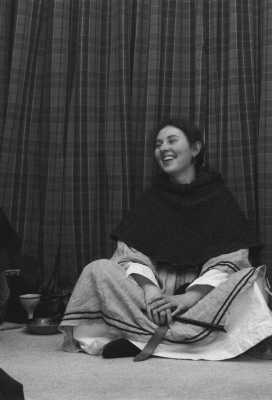Introduction
 I first discovered the Society for Creative Anachronism in 1997 when I met Jenny McSaveney. She was living in the same hall, and was only too pleased to explain why she sometimes dressed up in funny clothes. I wanted to play the SCA game as well, but I knew I didn’t have the time to be involved in such a dedicated social activity.
I first discovered the Society for Creative Anachronism in 1997 when I met Jenny McSaveney. She was living in the same hall, and was only too pleased to explain why she sometimes dressed up in funny clothes. I wanted to play the SCA game as well, but I knew I didn’t have the time to be involved in such a dedicated social activity.
Christchurch’s SCA group is the Barony of Southron Gaard, part of
the Kingdom of Caid. In Southron Gaard, there is a smaller group
centered around the University of Canterbury, called the College of
Reannag Fhara. But members of the Barony and the College attend each
other’s events — so much so that it is hard to tell where one group ends
and the other begins.
I finally gave in to the SCA when I visited Jenny at their table on Clubs
Day 2000. I began attending events and practices, trying to understand the dynamics of the group and the motivations of its members.
At first, I didn’t realise I was becoming less an observer and more a
part of the group. But at First Feast, Phil Anderson gave me a Black
Company token; I now belonged to an SCA household. The following
day I was ashamed to say that I had lost my token and could they
possibly give me another one?
Like all groups in society, the SCA has its political disagreements.
Often these are over the way the SCA game is played. For this book,
I have photographed people who approach the SCA from different
directions and with different intentions. Indeed, there are as many
versions of the Dream as there are people playing the SCA game.
Some of my friends say they would never dream of dressing up and
taking on a different persona. And when I wear period clothes on the
way to an SCA event, people often stare at me or pretend I do not exist.
The SCA obviously does not appeal to all people, but I believe it has a
valid place in society as a form of historical recreation.
Nicola Rooney
October ASXXXV (2000)
 I first discovered the Society for Creative Anachronism in 1997 when I met Jenny McSaveney. She was living in the same hall, and was only too pleased to explain why she sometimes dressed up in funny clothes. I wanted to play the SCA game as well, but I knew I didn’t have the time to be involved in such a dedicated social activity.
I first discovered the Society for Creative Anachronism in 1997 when I met Jenny McSaveney. She was living in the same hall, and was only too pleased to explain why she sometimes dressed up in funny clothes. I wanted to play the SCA game as well, but I knew I didn’t have the time to be involved in such a dedicated social activity.